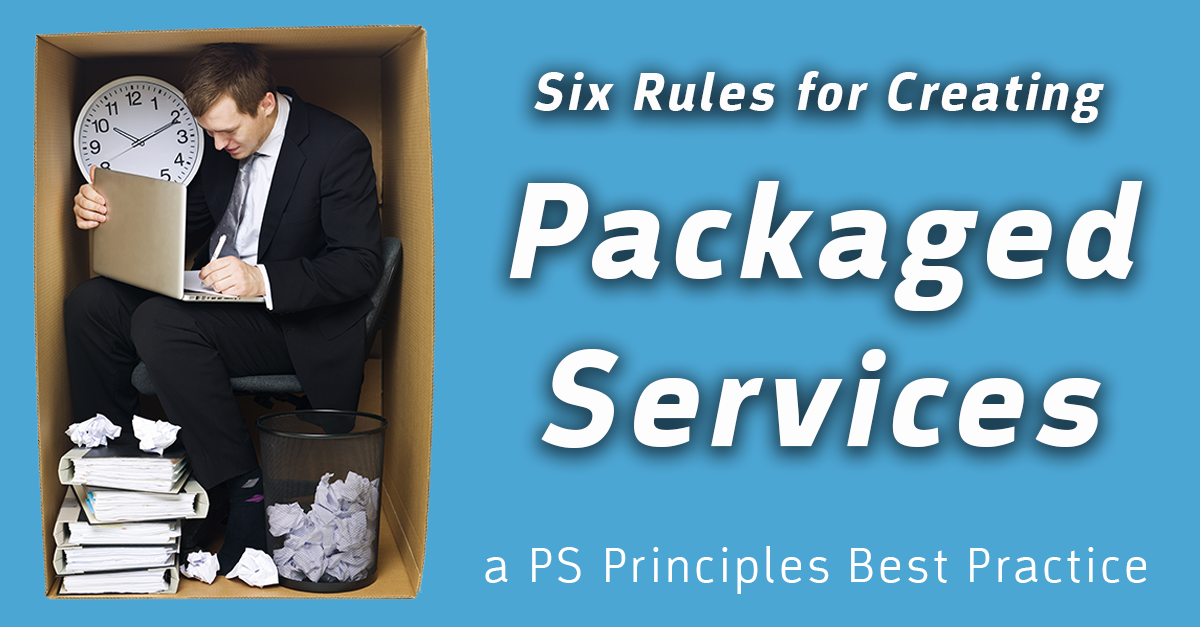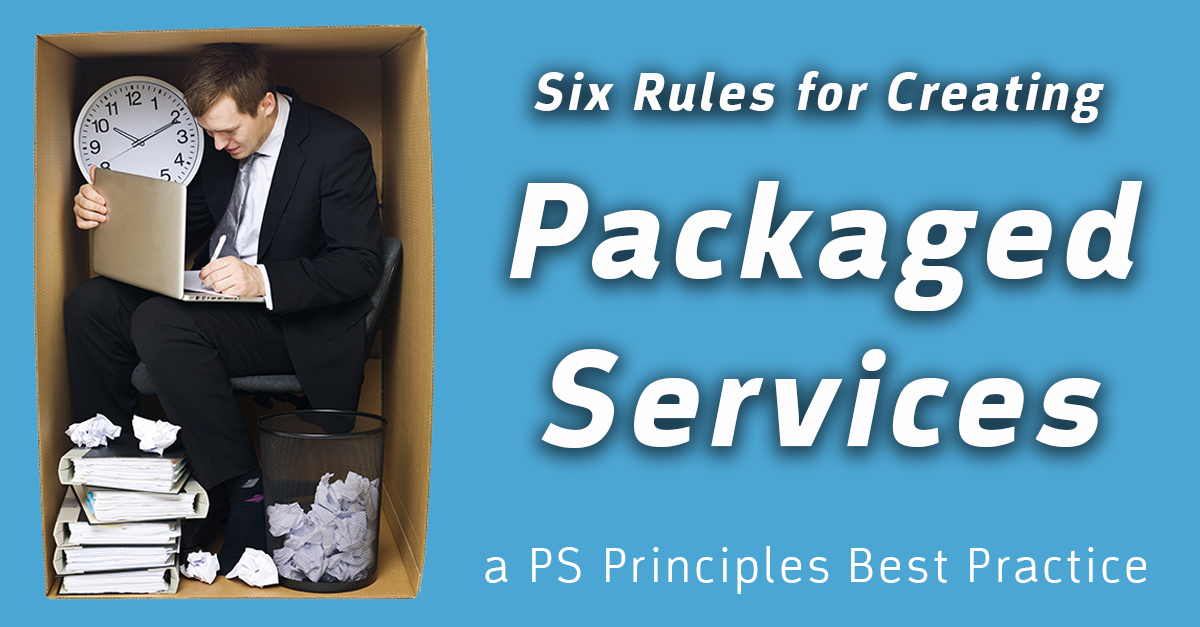Six Rules for Creating a Packaged Service


I can’t remember a time where I wasn’t being asked to “package” services. On last week’s Rethinking Professional Services, we harnessed successful and unsuccessful experiences to Rethink Packaged Services. Below, is a set of rules that can be applied to help push the chances of success in our favor.
Rule #1: Don't just package a service to make it easier to sell!
I understand the desire to make the selling of professional services easier. It is a reasonable incentive, however, if the new package doesn’t also simplify the delivery process or acceleration customer value, then we are creating a problem rather than solving one. This is because the delivery of professional services is full of unknowns. If the package doesn’t remove or fill-in those unknowns, then we haven’t changed anything. Instead, we just close more deals that are more aligned than before. If the packaged service helps to increase sales, then it is likely to also decrease customer satisfaction and the satisfaction of those employees trying to deliver the packaged service. I’m a strong promoter of commoditizing services, but we can only do it successfully when we do more than just simplifying the solution in theory. This leads us to the second rule…
Rule #2: Create Added Value
I see many people attempt to stitch packaged solutions together that don’t generate any added value. Why would a customer be interested in a prescribed solution if the cost of it is still calculated by multiplying the consultant’s hours by the same billing rate? This makes the creating a packaged service challenging because we can’t just reduce a consultant’s rate because we “packaged” the service. Either the service needs to be made cheaper while providing the same business value, or business value needs to be accelerated for the same price. If you can’t alter this equation, there is no need to “package” it!
Rule #3: Understand the Overhead
People forget that when you turn a service into a product, the service must inherit the overheads we typically see with products (while not losing the overhead we already had with professional services). The need to market the new package to generate awareness, provide sales training, and maintain the package all come at an additional cost. This is particularly true when we decide to create IP based assets (code, documents, templates, etc.) as a part of the package. Just like a product, we must incorporate the overhead to create and maintain these assets and keep them relevant to the market’s needs. A big killer of packaged services is plain old atrophy. The package gets created and then rolled out a few times, but nobody is assigned to keep it up to date. As a result, it withers and dies on the shelf.
Rule #4: Have a market driven purpose
This rule applies at all times for products and services, but it is sometimes forgotten when trying to help simply the sales process with a package. We must be crystal clear on the market problem we are trying to solve. The most successful packaged service offerings address a problem that a specific market segment might be facing. For example, small business grappling with the complex choices provided by an enterprise product or the industry specific workflow built into a generic product. If the package isn’t resolving a relevant problem, then nobody will buy it.
Rule #5: Set the Competitive Agenda
Releasing a packaged service will establish you as a thought-leader. While there’s value in this status, there is another benefit that is often overlooked. If you’re able to release the first packaged service in a specific market, then there is a very good chance that the day after you release it, your competitors are going to start replicating that offering. You can see this as bad news, or you can recognize it as an opportunity. You are now influencing their work stream. If you keep working diligently, you may be permanently setting their catch-up agenda.
Rule#6: Stay within the Lanes
If a successful packaged service overlaps too much with product development or product support responsibilities, then the professional services team may have only served to validate the idea for another division. If the packaged service encroaches too much on either product development or product support then eventually, and after much internal fighting, the package will be moved to the internal division where it belongs. At that point, the professional services team will lose the headcount and the revenue for the packaged offering. This being said, the creation of the packaged service can still be good for the company as a whole, so while it might be frustrating for the professional services team, it may not be the end of the world.
To create a winning services package, we must find a way to package existing raw ingredients in a way that can accelerate value for the customer. In other words, we are trying to create a whole that is worth more than its parts. This is difficult to do and one of the reasons packaged services are so hard to get right. Adhering to the rules above will help you identify if your services packages has a good chance at succeeding.
